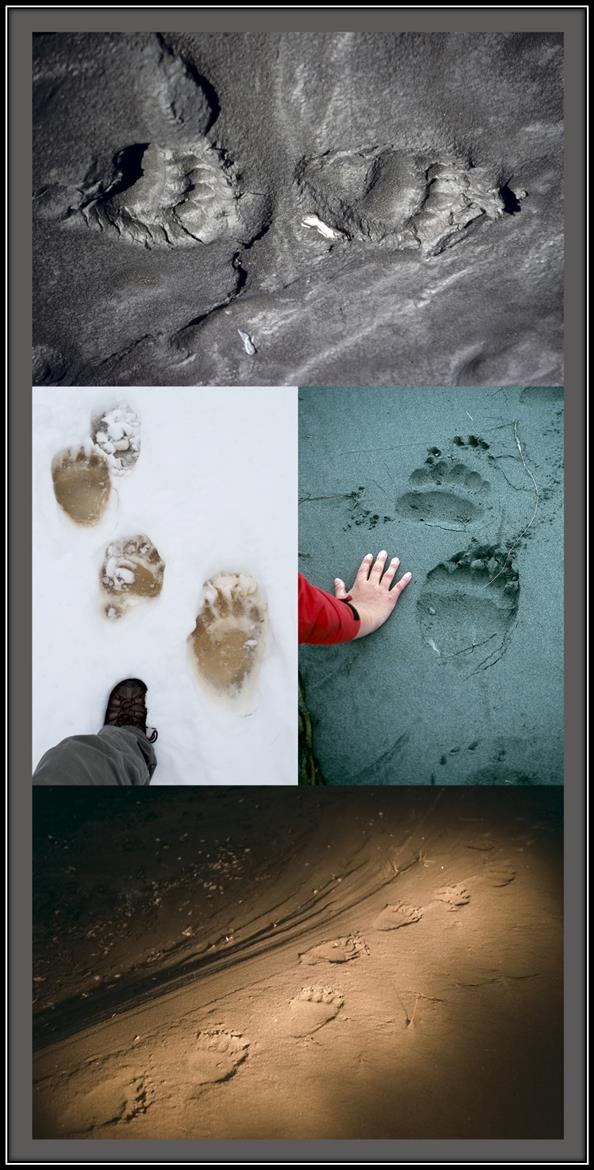
Bear Tracks
Other than a handful of too-close-for-comfort encounters, the photographer has never had to spray or shoot a bear. More often than not, human-bear problems occur when bears are attracted by improperly stored garbage or food or if they are injured in some way. Also, when hiking, hunting, or fishing, the "element of surprise" usually does not have a good outcome and can lead to bluff charges … or worse.
A sow with cubs, when feeling threatened or her cubs are in danger, will react instantly to remove the threat or she will die trying. There are nerve-wracking times when you are hyper-aware you’re in their territory and the mind and imagination goes into overdrive. Especially when out in the field for night photography, finding fresh tracks that were not there during the daylight hours is concerning.
Top-Clockwise, four types of bear tracks:
Fresh Black Bear tracks in the wet mud on a river delta in the Matanuska-Susitna Valley.
Very large coastal Brown Bear tracks on the beaches of Hinchinbrook Island.
Recent passage of the smaller (Interior) Toklat Grizzly on the river banks of the Toklat River in Denali National Park.
A young Polar Bear (the absolute apex predator) left its tracks under the photographer's hotel window in Kaktovik, on the Beaufort Sea.
Some general stats:
Black Bear (Average- 250-350 lbs./Heaviest of Record - 1,100 lbs.)
Kodiak Brown Bear (Heaviest of Record – over 1,600 lbs.)
Grizzly (Heaviest of Record – 1,150 lbs.)
Polar Bear (Heaviest of Record - 2,210 lbs.)
All species of bears are strong and powerful and one should be cautious when out in their domain.
All images © Dave Parkhurst www.TheAlaskaCollection.com



